5 Symptoms of Tooth Abscess Which Are Quite Worrisome
A toothache can be a nuisance, but sometimes it signifies a deeper problem. A tooth abscess, a collection of pus at the root of the tooth, is a serious dental issue that requires immediate attention. Ignoring it can lead to severe complications, including bone loss, spreading infection, and even potentially life-threatening situations. Knowing the warning signs of a tooth abscess empowers you to seek timely treatment and prevent potential consequences. So, in this blog, we’ll look into the potential symptoms of tooth abscess, which are often left unnoticed but require prompt attention. Also, we’ll look into the ways in which we can prevent tooth abscesses.
What Exactly is a Tooth Abscess?
A tooth abscess is a painful pocket of pus formed due to a bacterial infection within your tooth or gums. This infection can originate from various sources, and depending on the location, there are two main types of tooth abscesses:
- Periapical abscess: This is the most common type, arising when bacteria enter the pulp through a cavity, crack, or other tooth damage. The pulp is the soft inner part of your tooth containing nerves and blood vessels. As a result, the infection then spreads through the root canal and into the jawbone, forming the abscess.
- Periodontal abscess: This type develops from gum disease, where bacteria accumulate at the gum line, causing inflammation and infection. If left untreated, the infection can burrow deeper into the bone and form an abscess near the root of the tooth.
Causes of Tooth Abscess
Untreated Cavities
When sugary foods and drinks aren’t properly removed through brushing and flossing, bacteria flourish, forming plaque and leading to cavities. If left unchecked, these cavities can create pathways for bacteria to reach the pulp, the innermost layer of your tooth. As a result, it ignites an infection that forms an abscess.
Cracked or Broken Teeth
Cracks and chips in your teeth provide another entry point for bacteria. These fractures can expose the inner layers of your tooth, allowing bacteria to infiltrate the pulp and potentially lead to an abscess.
Gum Disease (Periodontal Disease)
This progressive infection of the gums and surrounding bone isn’t just about bad breath. As gum disease worsens, the supporting bone and tissue around your teeth deteriorate. This creates pockets where bacteria can accumulate and lead to an abscess near the tooth root.
Previous Dental Work
While uncommon, even dental procedures like root canals or fillings can introduce bacteria if proper sterilization isn’t followed. In rare cases, this can lead to an abscess developing later.
Weakened Immune System
Individuals with compromised immune systems due to illness, certain medications, or medical conditions might be more susceptible to developing infections, including tooth abscesses.
Top 5 Signs of Tooth Abscess
#1: Throbbing Toothache
A persistent, throbbing toothache can be a highly concerning symptom, disrupting your daily routine and causing significant discomfort. Here’s a more elaborate look at this warning sign:
Unrelenting and Throbbing Pain
Unlike a regular toothache that may come and go in waves, an abscess-related toothache is persistent and unwavering. The pain is often described as throbbing, pulsating with a rhythmic intensity that can be relentless. This constant ache can significantly impact your quality of life, making it difficult to concentrate, eat, and even sleep.
Nighttime Aggravation
The throbbing pain often worsens at night when you’re lying down, and your head is elevated. This position can increase blood flow to the inflamed area, intensifying the throbbing sensation and making it difficult to fall asleep or stay asleep.
Radiating Discomfort
The pain associated with an abscess may not be confined to the affected tooth alone. It can radiate to other areas of your face, including your jaw, ear, and even your head. This radiating discomfort can make it challenging to pinpoint the exact source of the pain, further adding to the distress.
#2: Facial Swelling
A hallmark symptom of a dental abscess is the potential for significant facial swelling. This inflammation arises from the body’s immune response to the bacterial infection. The swelling can manifest in your face, cheeks, or specifically around the affected tooth. In some cases, it might even spread to involve your jaw or neck. The degree of swelling can range from mild puffiness to pronounced inflammation that significantly alters your facial contours.
In severe cases, the swelling might become so extensive that it partially or completely closes your eye on the affected side. This can be alarming and is a clear indication of seeking immediate dental attention. While facial swelling can sometimes occur due to other dental problems, its presence in the context of a suspected abscess is a red flag that shouldn’t be disregarded. It’s crucial to seek prompt, professional evaluation to diagnose the cause and receive appropriate treatment.
#3: Sensitivity to Hot and Cold
A tooth with an abscess can become excruciatingly sensitive to hot and cold temperatures. Also, it causes significant discomfort that goes beyond the typical twinge associated with sensitive teeth. This heightened sensitivity arises from the inflammatory response triggered by the bacterial infection within the abscessed tooth. Let’s delve deeper into this phenomenon:
The Culprit: Inflammation and Irritated Nerves
Abscess formation: When bacteria breach the tooth’s defenses, they establish an infection within the pulp, the central chamber housing nerves, blood vessels, and connective tissue. This bacterial invasion triggers an inflammatory response from the body’s immune system.
Increased pressure and nerve irritation: As the infection progresses, pus, a collection of white blood cells and dead bacteria, accumulates within the pulp. This accumulation creates pressure that irritates the nerves within the tooth.
Heightened sensitivity: These irritated nerves become hypersensitive to external stimuli, particularly temperature changes. Even mild hot or cold beverages or food can trigger a sharp, throbbing pain that can linger for a prolonged period, even after the stimulus is removed.
Beyond Sensitivity: Additional Warning Signs
In addition to the heightened sensitivity, a tooth with an abscess may exhibit other signs that warrant immediate dental attention:
- Throbbing pain: This pain can be constant or come in waves and may even radiate to the jaw, ear, or head.
- Swelling: The surrounding gum tissue may become swollen and tender, sometimes forming a visible bump near the affected tooth.
- Fever: In some cases, an abscessed tooth can cause a low-grade fever.
- Bad breath: The pus associated with the infection can contribute to bad breath.
#4: Difficulty Chewing
A tooth abscess, a collection of pus at the root of the tooth due to infection, can significantly impact your ability to chew comfortably. The act of biting down, essential for breaking down food into manageable pieces, can intensify the throbbing pain associated with the abscess. This discomfort can range from a dull ache to a sharp, pulsating sensation, making even the simplest act of chewing feel unbearable.
The pain caused by a tooth abscess can lead to a reluctance to chew, impacting your ability to consume a balanced and nutritious diet. This can be particularly detrimental for individuals with specific dietary needs or those recovering from illness or surgery—a lack of essential vitamins and minerals from skipping out on various food groups due to pain.
#5: Bad Breath
Bad breath, medically termed halitosis, can be a cause for concern, especially when accompanied by other dental symptoms. While various factors contribute to bad breath, its presence alongside specific signs can point towards a potential tooth abscess. A tooth abscess is a localized infection within the tooth or surrounding tissues, often caused by deep dental decay or gum disease left untreated.
This infection harbors a collection of pus, which is a mixture of white blood cells, dead tissue, and bacteria. This bacterial activity within the pus generates volatile sulfur compounds (VSCs). These VSCs are gaseous by nature and possess a foul odor, often described as:
- Metallic: This metallic tang can arise from certain VSC types, like hydrogen sulfide.
- Putrid: The decaying organic matter within the pus can contribute to a putrid or rotten egg-like smell.
How Bad Breath Strengthens the Case for an Abscess
While bad breath alone doesn’t definitively diagnose a tooth abscess, its presence alongside other symptoms can significantly strengthen the possibility:
- Persistent Bad Breath: Unlike occasional bad breath caused by dietary factors, the bad breath associated with an abscess is typically persistent and doesn’t improve with regular brushing or rinsing.
- Intensified Bad Breath: The foul odor emanating from the abscess may worsen upon waking up due to decreased saliva production during sleep. As a result, it allows the bacteria to thrive and generate more VSCs.
- Bad Breath Localized to a Specific Area: If the bad breath originates from a particular area of your mouth, it may correspond to the location of the abscessed tooth.
Taking Care of Your Smile
Here’s a comprehensive guide to help you maintain a healthy smile and prevent potential problems related to tooth abscesses:
Brushing:
- Brush your teeth twice a day.
- Consider brushing after breakfast and before bed for optimal cleanliness.
- Use a soft-bristled toothbrush and fluoride toothpaste.
- Tilt the brush at a 45-degree angle and gently brush all surfaces of your teeth, including the front, back, and sides.
- Remember to brush your tongue to remove bacteria and freshen your breath.
- Replace your toothbrush every 3-4 months or sooner if the bristles become frayed.
Flossing: Use gentle motions to remove plaque and food particles from between your teeth, reaching to the gum line. If traditional flossing is difficult, consider using interdental brushes or water flossers.
Diet:
- Limit sugary and acidic foods and drinks, which can contribute to tooth decay.
- Opt for healthy choices like fruits, vegetables, and dairy products.
- Rinse your mouth with water after consuming sugary or acidic substances.
Lifestyle: Avoid smoking and excessive alcohol consumption, as they can stain teeth and contribute to oral health problems.
Regular Dental Checkups: Schedule regular dental appointments (typically every six months) for professional cleanings and checkups. This allows your dentist to identify and address any potential issues early on.
Experiencing any of the five symptoms mentioned earlier can be a cause for concern and a strong signal of a potential tooth abscess. Remember, a tooth abscess is a serious dental issue that should not be ignored. Prompt dental intervention is crucial to prevent the infection from spreading and causing further complications. Ignoring the symptoms can lead to tooth loss, damage to the jawbone, and even life-threatening situations in severe cases. Therefore, if you experience any of these warning signs, schedule an immediate appointment with your dentist. Early diagnosis and treatment are essential for effectively managing a tooth abscess and preserving your oral and overall health.





